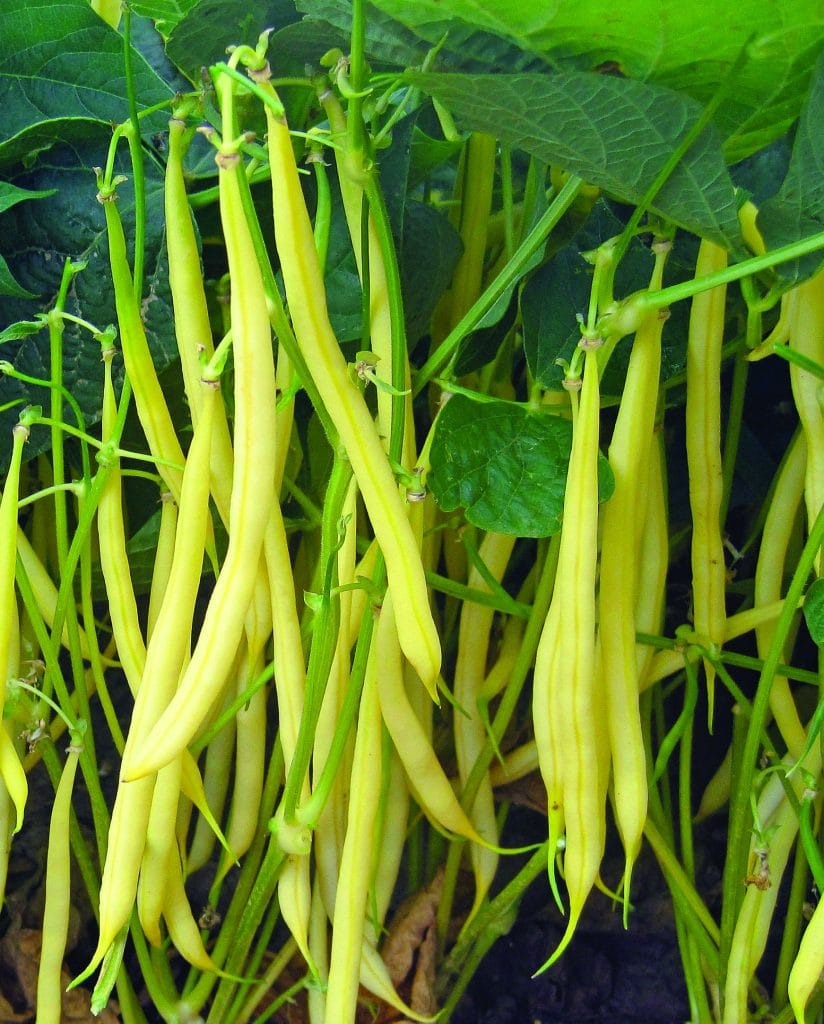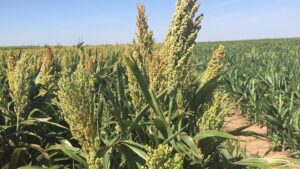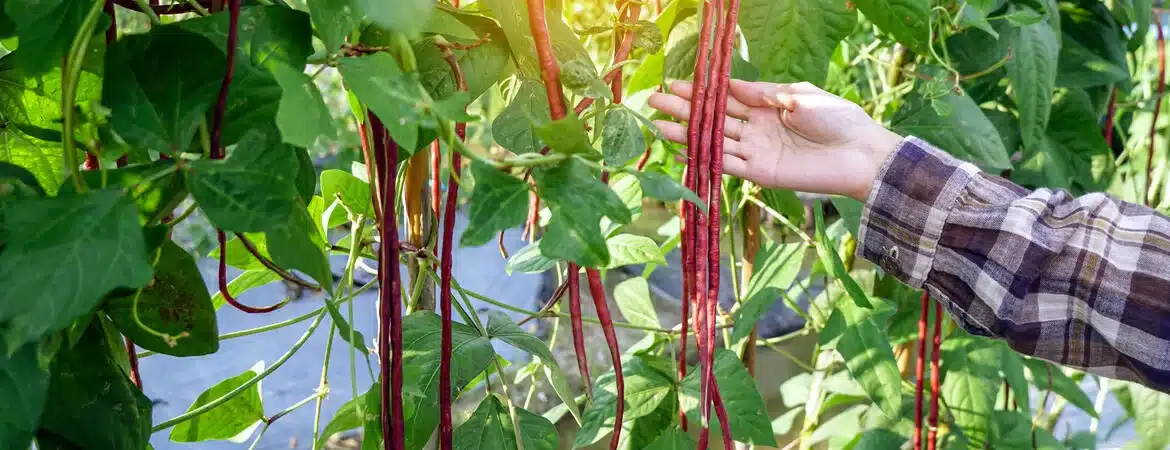A closer look at how some companies carry out French bean breeding.
This year is the International Year of Pulses. What better way to put a spotlight on those crucially important crops, which are a vital source of plant-based proteins and amino acids for people around the globe.
Experts agree, pulses should be eaten as part of a healthy diet, to address obesity, and to prevent and help manage chronic diseases, such as diabetes, coronary conditions and cancer. In addition, pulses are an important source of plant-based protein for animals. And if that wasn’t enough, this wonderful group of plants has nitrogen-fixing properties, which contribute to increased soil fertility and have positive effects on the environment.
In this group of crops, we find lentils, beans, peas and chickpeas, and in this issue of European Seed we’ve focused on the French bean. We sat down with several breeders for some insights on breeding new varieties and crop innovations. Christophe Vivien (CV), Vilmorin’s global bean product manager; Elise Vendeuvre (EV), Vilmorin’s global bean breeder; Gerthon van de Bunt (GvdB), senior breeder at Pop Vriend Seeds; and Jaap Reus (JR), senior breeder legumes at Syngenta; share their thoughts on breeding targets, the possibility of hybrid bean varieties, disease challenges and innovations.
ES: When we talk about French beans in Europe, what are the main breeding targets for the crop?
CV: The main breeding targets depend on the markets, such as processing, fresh, hobby, professional, open-field or greenhouse, but also on the typologies, for example, dwarf bean, climbing bean, flat bean, round bean, et cetera. Vilmorin, as a major player for this species, is present in all these markets in Europe and Africa. Common breeding targets for those markets are yield, disease resistance, pod quality and plant habit.
GvdB: Yield is the most important selection criteria of all, and increased disease resistance is one of the ways to increase yield. Since they are harvested by machines, it is very important to have beans with a very concentrated setting—ideally, all beans are ready on the same day. Ease of harvesting and processing are also important criteria. Uniform pod colour, pod diameter, pod length, taste, and shelf life for fresh market beans are other important criteria. Another breeding consideration is for the less developed markets, where pods are hand-picked. The breeding criteria for this area would be strong plants with long standing ability and possible multiple harvests per plant.
EV: Each programme has its own breeding scheme because breeding objectives depend on the slot. Greenhouse grown bean types do not need the same disease resistance package as field grown beans. Breeding is a process that always starts with crosses, followed by selection and fixation of traits. Downstream is experimentation, such as yield trials, parallel to seed increase and end of selection.

ES: Let’s assume that yield and disease resistance are among the most important targets. What other breeding targets do you spend your time on? Protein content? Dry matter? Drought and/or heat tolerance? Any others?
CV: Vilmorin research teams also focus on other aspects, such as flexibility and versatility—these are absolutely crucial. The colour of the pod, and flesh quality can also be important criteria depending on which markets we are talking about. Also mentionable are the ease of harvest or earliness for processing markets. For example, the Vilmorin extra fine green bean Crosser, launched in 2014 and dedicated to western European processing markets, has a strong commercial potential due to its earliness, pod quality and yield potential.
GvdB: Yield is very important indeed, but also consistency through the season and through the years. Since beans are an open-field crop, they must be able to deal with different—adverse—conditions. Heat tolerance is crucial in southern and Eastern Europe, but cold tolerance and cold vigour is needed in the cooler areas, such as northwest Europe.
JR: Drought and heat tolerance are important parts of the yield preservation trait—abiotic stress tolerance—which is a key trait in our programmes. Other traits we are selecting for are quality traits, such as:
• pod length of whole or cut beans
• uniform grouping of the beans in a grading class
• fibre/string is a trait that has a negative effect on eating quality
• harvestability both for fresh and processing
• pod colour has to be uniform and in line with the processors’ specifications
Then there are seed quality traits, like transverse cracking and mechanical damage. Both have a negative effect on the germination of seeds.
ES: Many crops have been turned from self-pollinated or open-pollinated crops into hybrid crops. Are there any developments in that direction with French bean?
EV: Bean is an autogamous crop. The flower biology does not allow insect pollination, and multiplication or increase rate is too low for hand pollination, like tomato hybrid seed. As far as I know, there aren’t any commercial hybrid bean varieties on the market today.
GvdB: We think hybrids will still take some time. Many hurdles need to be overcome before we will be able to make hybrids on a commercial scale.
JR: French beans today are still a self-pollinated crop, and we don’t see them moving towards an F1 crop in the near future. Beyond that—anything is possible, and we will scout and monitor development in that direction with great interest.

ES: Do certain regions require a different type of French bean than others? How are they different?
CV: Yes, they do. For instance, extra fine beans grown by processors are very specific products, mainly for French and Benelux markets. In this regard, Vilmorin has specialised for the extra fine green and wax bean markets. In most other European countries, the market requires beans with bigger pod diameter.
GvdB: Yes, different areas, and sometimes even different countries, need different types of beans. We all probably know the French require ‘haricots verts’, which are extra fine beans with a pod diameter less than 6.5 mm. In Spain, mainly flat beans are produced, whereas in certain eastern European countries there is a preference for wax, or yellow, beans. In most other areas, green beans are needed. However, colour intensity is another important point. In Italy, for instance, the market needs very dark green pods, whereas in northwest Europe, a more neutral or medium green colour is preferred.
ES: What kind of investment is needed in time and money to develop a new French bean variety?
JR: It takes six to seven years to create a commercially-ready variety, depending on the risk you are willing to take. Costs are about €400,000 per variety.
EV: From the first cross to first year of development, the average time is six years for dwarf beans. We test new varieties in a research trial network for at least three years before product development with our clients. Our climbing beans are bred and developed in Spain. There the breeding scheme lasts five years because we can grow beans in three cycles per year, and all three cycles are useful for selection. Whereas dwarf beans are grown only during the summer in Europe, so we only do yield trials once a year.
The main Vilmorin breeding station is in La Ménitré, northwest of France, where we do the crosses and first generations. Our greenhouses allow us to grow three seed-to-seed cycles per year. As a company with a global scope, we do some breeding with nurseries in the north, southwest and in Brittany, in France; winter nurseries in Chile; and counter-season seed increase in Spain.
Vilmorin’s breeding team has a dedicated bean breeder, two permanent breeder assistants, and the support of local technicians in different locations. Vilmorin devotes 16 per cent of its turnover to research. The bean research rate is aligned with this overall average.
ES: How has the yield increase been over the past years?
EV: Yield increase is not as critical for the French bean as it is for field crops, such as corn or wheat. Vegetable species are not tested for improved yield and registered in a European catalogue. However, our clients, especially processors, expect improved yields from new varieties. In France, UNILET, the French federation of processed vegetable producers, reports yield increases in all bean types, such as green extra fine and very fine, green larger sieves, wax and flageolets; this is due to improvements in crop management as well.
JR: French bean breeding was mainly focused on quality and not quantity. To breed for yield increase in French beans is hard, as the variance in yield between years and locations can be more than 100 per cent. Next to this, yield has to be corrected to equal maturity between the different results. Not correcting your yield data based on maturity of the product can have an effect of +/- 25 per cent.
Stable yielding varieties with the right quality can dominate the market for more than 15 years. Because of this long life cycle of varieties, you don’t see a yield increase like we see in field crops, where varieties have a much shorter life cycle. Not seeing yield increases like you see in field crops motivated Syngenta to completely renew its breeding strategy from quality driven to yield driven in 2011.
To be able to make this shift in strategy, we developed a new breeding method and built new breeding tools which helped us in identifying and understanding yield increase better. Currently we are seeing the first results of this change, and now we are comfortable to provide and communicate increased yield and variety performance based on data.
ES: Which diseases are most important in your breeding work? Have there been any new diseases discovered in French Bean over the past few years?
JR: The most important disease in Europe would be Sclerotinia sclerotiorum, or white mould. Occasionally, we see new diseases popping up in fields, but overall they are viewed as a one year location event. We are normally very conservative in adding a new disease trait to our programme. To add a new trait can slow down the programme by 50 per cent. We usually choose the strategy for selecting against when we see new and/or low frequency diseases in our breeding trials, where we record differences in susceptibility and deselect the most effected lines, which are recorded as a flaw.
CV: It depends on the markets. For example, regarding the processing market, Vilmorin breeding work aims to provide a full disease resistance package to the main diseases halo blight, common bacterial blight, anthracnose and bean common mosaic virus. We also work on Sclerotinia, which is becoming critical in many areas and root rot resistance, and have developed internal tools to phenotype our breeding lines.
GvdB: This is dependent on area. For northwest Europe, Sclerotinia is currently the most devastating disease. Sclerotinia has many host plants and easily survives in the soil for five years or more. To become as environmentally friendly as possible, it is important to increase the resistance level in our varieties. Bacterial brown spot and cucumber mosaic virus are diseases that seem to have become more widespread.

ES: How important is genetic diversity in your breeding work? What is the main source of your diversity—mainly commercial varieties, or also landraces and other species?
EV: Genetic diversity is key in breeding work, especially when breeding for disease resistance. We mainly use elite lines and commercial varieties, but also exotic material, such as improved dry bean lines or, sometimes, landraces, when the interesting trait is not present in French bean. The main source of improved lines is the United States, where public research is very active in pre-breeding. Vilmorin, as a business unit of Limagrain, has access to a historic bean genetic resources collection, comprising about 3,300 lines, which are maintained and characterized.
GvdB: Genetic diversity is crucial in plant breeding. For French bean breeding, the genetic base in some segments is quite narrow, for example, in extra fine beans. Fortunately, we can cross French beans with dry beans, where much more genetic diversity is available.
JR: Genetic diversity is very important in French beans. The main source we use are the commercial varieties, in all classes, for short-term strategy. For long-term strategy, we will use just about every material that carries interesting traits and which fits our strategy and we can legally receive. For this, we are actively scouting and monitoring literature and meetings, like the Bean Improvement Cooperative.
ES: What innovations—technological, genetic, molecular, et cetera— are in the pipeline in French Bean breeding?
EV: Some upstream projects are commonly led together with our colleagues from HM.CLAUSE, another business unit of Limagrain, based in the United States. Our projects often target molecular marker development for disease resistance, but sometimes also quality traits. We’ve developed an internal technology to improve reliability and accuracy of pod calibration by image analysis: sieve, length and curvature are automatically calculated. In this way, we can increase the number of samples calibrated every day, and lower labour costs of the breeding team.
GvdB: Molecular markers are becoming more and more important. They facilitate a breeder following certain traits, but the final decisions still have to be made in the field. BeanCap at http://www.beancap.org/ has done great work in discovering thousands of markers, and revealing the DNA sequence of beans. This will help us to learn from other crops, such as soybeans. Markers for monogenetic traits are widely available. The next challenge is to find more and better markers for more complex—quantitative—traits.
JR: We have developed image analysis tools that help us to identify the right maturity and grading. Syngenta is also building breeding software tools that monitor the performance of our selections over years and locations better. This makes us able to make better advancement decisions. Markers are implemented in our programmes to identify traits and are used to speed up the gene-of-interest frequency in our programmes. We are also using our marker platforms to understand the diversity of our germplasm for better parent selection, and to be able to identify our varieties which support both the seed production group and intellectual property.













